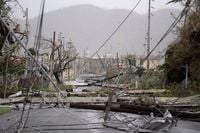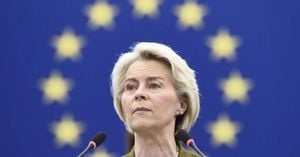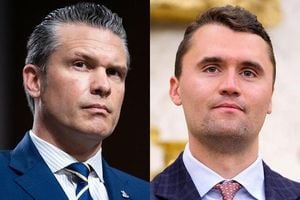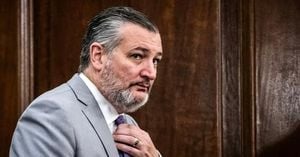When Hurricane Maria made landfall on Puerto Rico on September 20, 2017, it didn’t just bring wind and rain—it changed the island forever. According to UPI, Maria struck as a Category 4 hurricane, the most powerful storm to hit Puerto Rico in more than 80 years. By the time the winds died down and the rain stopped, the devastation was staggering: hundreds of homes destroyed, streets transformed into raging rivers, and the entire island plunged into darkness.
The numbers paint a grim picture. As reported by Mercury News, Hurricane Maria wiped out as much as 75 percent of Puerto Rico’s power distribution lines. The result? An island-wide blackout that left 3.4 million residents without electricity. For weeks—and in many places, months—life on the island ground to a halt. Hospitals struggled to keep life-saving equipment running. Water pumps failed. Communications collapsed. And, as UPI noted, the aftermath would claim nearly 3,000 lives over the following months, a toll that would haunt Puerto Rico long after the winds had faded.
It’s hard to overstate the chaos Maria unleashed. In the eastern region of Humacao, electricity poles and lines lay toppled on the roads, as captured in a striking photo by Carlos Giusti for the Associated Press. Homes were flattened, their roofs torn off, and entire neighborhoods were left unrecognizable. Some streets, usually bustling with daily life, became impassable rivers, carrying away cars and debris in their currents. The storm’s onslaught, according to Mercury News, threatened to plunge the already struggling U.S. territory even deeper into financial crisis.
Puerto Rico’s power grid, already fragile before the storm, simply couldn’t withstand Maria’s fury. The blackout was total—and unprecedented. For many, the darkness lasted for months. In rural areas, some residents didn’t see the lights come back on until nearly a year later. The lack of power made recovery efforts excruciatingly slow. Without electricity, basic needs like refrigeration, air conditioning, and even clean water became luxuries.
But the devastation wasn’t limited to infrastructure. The human cost was profound. According to UPI, nearly 3,000 people died as a result of the storm and its aftermath. Many of these deaths weren’t caused by wind or floodwaters, but by the slow-moving catastrophe that unfolded in the days and weeks after landfall: medical equipment that failed without power, infections that went untreated, and the overwhelming stress of survival in a landscape transformed by disaster.
For Puerto Rico, Hurricane Maria was more than a natural disaster—it was a turning point. The storm exposed the vulnerabilities of the island’s infrastructure and the challenges of its political and economic status. As a U.S. territory, Puerto Rico’s ability to respond and recover was hampered by bureaucratic hurdles and limited resources. The blackout, for example, revealed just how dependent the island was on a centralized, aging power grid, and how difficult it would be to rebuild without significant outside help.
The financial crisis that loomed before Maria only deepened in the storm’s aftermath. Mercury News reported that the destruction of the power grid and the widespread damage to homes and businesses threatened to push Puerto Rico further into debt. Schools closed, hospitals struggled, and families faced the agonizing choice of whether to stay and rebuild or leave the island altogether. The population decline that followed was a direct result of the hardship Maria inflicted.
Yet, amid the wreckage, stories of resilience began to emerge. Communities came together to clear debris, share food and water, and care for the most vulnerable. Local leaders organized relief efforts, often filling gaps left by slow-moving government aid. International organizations and volunteers poured in, bringing supplies and expertise. For many Puerto Ricans, the experience of surviving Maria forged a renewed sense of solidarity and determination.
Still, the scars remain. Years later, the memory of Hurricane Maria lingers in the collective consciousness of the island. The rebuilt power lines, while a sign of progress, are a reminder of how much was lost—and how much remains to be done. The nearly 3,000 lives lost are mourned not just as statistics, but as friends, family members, and neighbors whose absence is felt every day.
The lessons of Maria have not been lost on Puerto Rico or the wider world. The storm’s devastation underscored the urgent need for resilient infrastructure, better disaster preparedness, and a more equitable system for delivering aid. In the wake of the blackout, there have been calls to modernize the island’s power grid with renewable energy and decentralized systems, to ensure that history doesn’t repeat itself.
In the U.S. mainland, Maria’s aftermath sparked a national conversation about the responsibilities owed to Puerto Rico as part of the United States. The slow pace of recovery and the scale of the disaster drew attention to the island’s unique status and the challenges it faces in securing federal support. For many Puerto Ricans, the experience was a painful reminder of their second-class citizenship—and a catalyst for renewed advocacy and political engagement.
On this day—September 20—Puerto Rico pauses to remember. The anniversary of Hurricane Maria is marked by ceremonies, moments of silence, and a collective reflection on the storm’s legacy. For those who lived through it, the memories are vivid: the roar of the wind, the darkness that followed, and the long, uncertain road to recovery.
Looking back, it’s clear that Hurricane Maria was a defining moment for Puerto Rico. The storm’s impact was measured not just in the destruction it caused, but in the resilience it inspired. As the island continues to rebuild, the lessons of Maria remain as relevant as ever: the importance of community, the need for preparedness, and the enduring strength of the human spirit in the face of disaster.
Today, as Puerto Rico marks the anniversary of Hurricane Maria, the island stands as both a testament to the devastation wrought by nature and a beacon of resilience. The story of Maria is not just one of loss—it’s also one of survival, solidarity, and hope for a brighter, more secure future.




